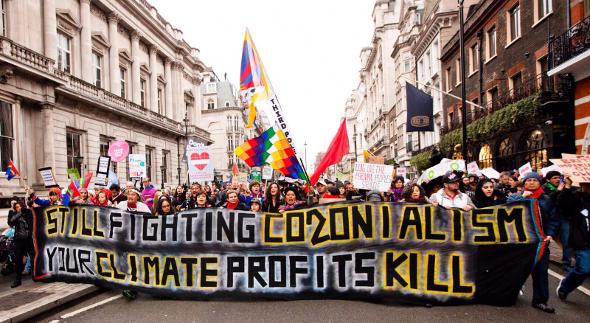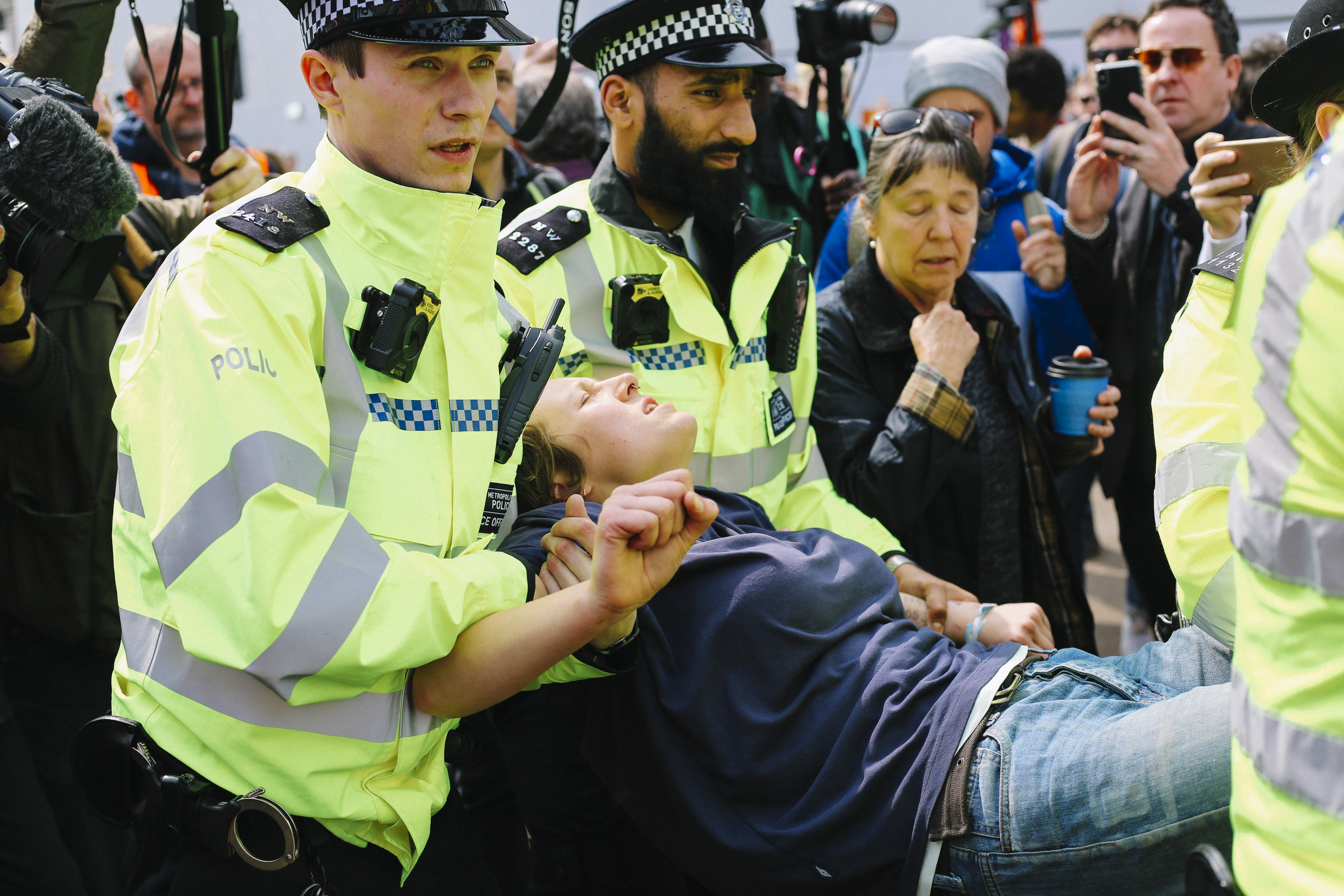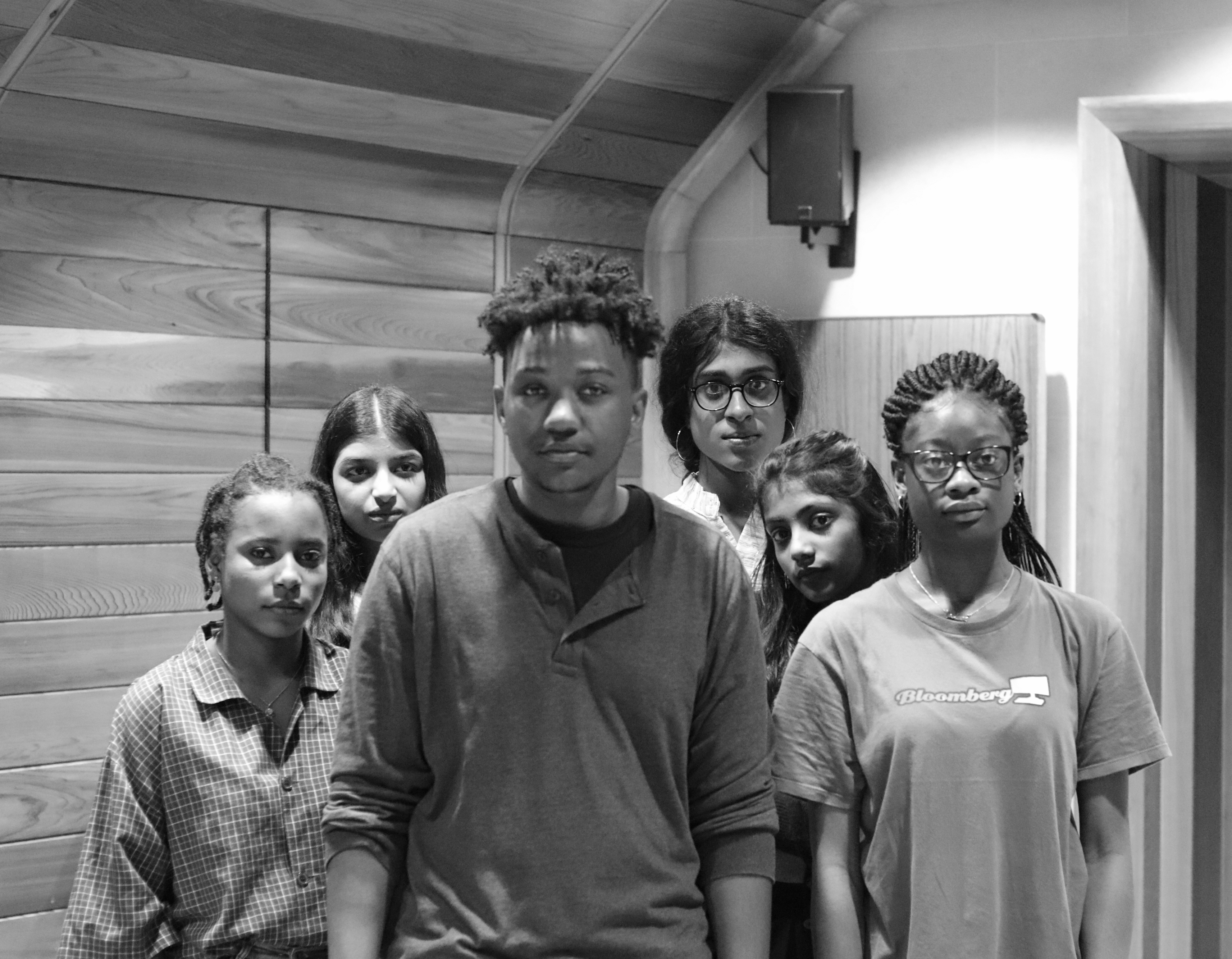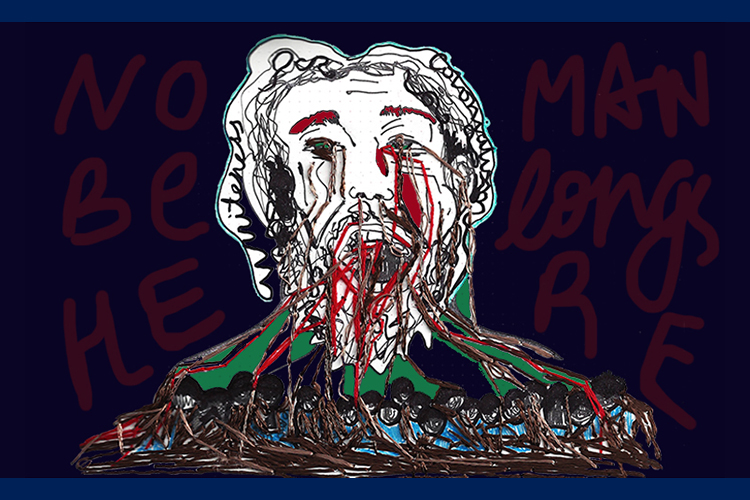
The persistent alienation of Indigenous communities within the modern environmental movement was painfully apparent at the People’s Climate March I attended in London last November. The Wretched of the Earth (WoE) collective; made up of Indigenous Pacific Island communities as well as People of Colour in the UK; penned an open letter published by “Black Dissidents”, detailing that they were invited to lead the People’s Climate March as it would symbolise how such communities are at the forefront of the destructive effects of climate change. However, since extending this invitation the organisers rearranged the blocs so that the collective no longer lead the march. When the collective attempted to reclaim their rightful place at the front of the march and hold a peaceful sit-in outside BP headquarters, the police were contacted by organisers of the march. Furthermore placards made by the delegation reading “British Imperialism Causes Climate Change” were physically removed by organisers of the march and replaced with signs projecting what they thought to be “a more positive message”. Of course this controversy escaped the mainstream media entirely.
Unlike the Amazon or the Arctic ecosystems, the Pacific Islands are overlooked in conversations about conservation. Inhabitants of the Pacific Islands are particularly susceptible to the effects of Climate Change because of the infamous El Niño (Southern Oscillation), which occurs once every 2-7 years due to the surface warming and expansion of sea water towards the Americas. Geographically, its impacts are far reaching. Indeed the devastating Indonesian forest fires and Hurricane Patricia; the biggest storm recorded by meteorologists to date in the western hemisphere; that occurred last October were attributable to the Southern Oscillation. According to the World Health Organisation (WHO) the heavy rains expected in Peru, Ecuador, Paraguay and southern parts of Brazil as a result of El Niño could accelerate the spread of the Zika virus. Whilst the severe droughts and floods will threaten the food security of at least 100 million people across the continents of Asia, Africa and South America till 2017 at the very least.
Tropical rainforests that belong to Indigenous people store 168 billion tonnes (20%) of the world’s total carbon stock. Yet last December at the conference of parties in Paris (COP21) the US, EU, and Australia persuaded governments to oppose the inclusion of a legally binding clause in the Paris Agreement to protect the land rights and sovereignty of Indigenous communities; the agreement stipulates that states merely consider, rather than comply with the human rights obligations of Indigenous communities. Such exclusions are unprecedented in UN treaties and more confounding considering the organisation’s own acknowledgement of the environmental degradation of Indigenous land by Western democracies. At the United Nations Permanent Forum on Indigenous Issues in 2008, Michael Dodson noted that “indigenous land and waters were being targeted by industrialized nations for dumping of toxic or radioactive wastes from industrial or military operations, often without informing residents of dangers.” Dodson cited the phosphate mines of Nauru, Banaba and Makatea Islands, and the copper and gold mines of Ok Tedi, Panguna, Freeport and Vatukoula as examples of environmental exploitation for profit. The pushback at COP21 from the aforementioned governments against Indigenous land rights was motivated primarily by a fear of legal liabilities over such actions.
This speaks perfectly to the point made by the WoE collective in their open letter to the organisers of the People’s Climate March in London, that Indigenous communities as well as communities of colour “in both the global south and the global north, bear the heaviest burden of climate change” psychologically and physically. Indeed the National Association for the Advancement of Coloured People (NAACP) detailed in their “Coal-Blooded” report that in 2012 68% of African Americans lived within the 30 mile radius of maximum pollutant exposure from coal fired power plants. Consequently communities of colour inhaled 40% more polluted air than caucasian communities.
Over and above the governing political class, amongst environmental activists people of colour and Indigenous communities are marginalised even further still. This penny dropped for me last August as I was sat in my local independent cinema watching How To Change The World; a documentary compiled with archival footage exploring the origins of Greenpeace. For me, a key yet questionable moment in the film was one where Rex Weyler recalled the movement’s first “mind bomb”. A small Greenpeace boat had intercepted a Russian whaling ship and a harpoon was fired at a whale just a few millimetres shy of an activist’s head at a whale. That moment was inadvertently immortalised on camera; Weyler even had the nerve to hail it as the moment that “launched the modern ecology movement”; because of course no indigenous community dedicated themselves to respecting and protecting their immediate environments before Greenpeace. Despite being self-gratuitous to a sociopathic degree, How To Change The World still snagged the Green Film Award at the Sheffield Doc/Fest last year, thereby gaining recognition over far more compelling and complex narratives to ecological activist efforts from the macroeconomic Global South.
Given the free trade agreements that are currently at various stages of negotiations, a more relevant, topical, and contentious choice for the award would have been Sunu. This documentary explored the battle of Indigenous farmers against Monsanto, a conglomerate which attempted to introduce Genetically Modified (GM) Maize farms in Mexico. In October 2013 a Mexican judge ruled to ban all experimental and commercial planting of GM Maize by biotechnology companies such as Monsanto, to protect 22,000 varieties of Maize. However after Monsanto appealed the injunction 93 times over two years on the basis of their “Vision 2020” plan; which aims to double Maize production in Mexico; reduce persistent poverty amongst small-scale maize farmers to the end of making Mexico a self sufficient producer of Maize; and minimise the negative environmental impacts of maize farming; the injunction was unsurprisingly overturned.
What is clear is that the modern environmental movement is being whitewashed, what is less clear is why. From my perspective this is attributable to two things. Firstly, environmentalist thought is conflated with ecologist thought. More specifically modern environmentalism is often misconstrued for deep ecology; which places great importance on the spirituality of the human relationship with nature to the end of fostering a sense of ecological solidarity regardless of our socio-economic wellbeing. Despite the deep connection between human beings with their surroundings and vice-versa, ecological schools of thought acknowledge the irrelevance of human existence to nature’s inherent value. Greenpeace focus too heavily on deep ecological principles and as such are completely removed from the stark reality of the structural inequalities present in wider society which are the root cause of the environmental challenges there are to be overcome.
There is an inexplicable reluctance and fear within these movements to evolve away from deep ecology into social ecology. Heaven forbid they are overly critical of the white capitalist patriarchy at the heart of environmental degradation. Social ecology was pioneered by the prominent libertarian socialist and anarchist Murray Bookchin, who succinctly justified the necessity of social ecology by pointing out that “the plundering of the human spirit by the market place is paralleled by the plundering of the earth by capital”. Racism in both its implicit and explicit forms thrives in the current climate of capitalism. Attempting to depoliticize the fight for environmental justice within organisations such as Greenpeace by consciously failing to challenge the systematic oppression of people of colour, is one of the many reasons why they remain marginalised within the ecological movement.
Whilst ecologists tend to be biocentric, environmentalists are comparatively more anthropocentric; their schools of thought diverge along either apocalyptic or emancipatory paths. Western efforts to mitigate the effects of climate change are driven by an incessant need to preserve its economic best interests. Recycling, reducing, and reusing products are behaviours that are characteristic of emancipatory environmentalism. Apocalyptic environmentalism on the other hand works on a much larger scale and favours centralised government intervention over human activities that threaten environmental health. Examples of such interventions so far have been the funding of technology that can harness renewable energy and have yet to include legally binding commitments to actively divest from fossil fuels and reduce greenhouse gas emissions. If you are tempted to cite the most recent conference of parties in Paris, you would be wise to resist. After all global atmospheric temperatures have already exceeded 1°C above pre-industrial levels. This is well over halfway the 2°C tipping point beyond which scientists have predicted more frequent occurrences of destructive natural phenomenon whose victims will largely be people of colour.
The question of whether or not the whitewashing of the ecological movement is reversible largely depends on whether or not there can be any reconciliation between the biocentric ecological schools of thought that are apolitical, and anthropocentric environmentalist schools of thought that are apathetic to any form of socio-economic organisation outside of existing capitalist structures. In either case, people of colour and particularly Indigenous communities are isolated. A possible solution lies in the overlap of emancipatory environmentalism with social ecology where both principles mutually favour small, decentralised forms of social organisation. In Richmond; a heavily industrialised city in the US; its local council adopted “The General Plan 2030” as a legally binding land use directive over the next two decades. This was the culmination of the efforts of 2000 individuals that included People of Colour from local African-American and Latino communities, as well as organisations such as Asian Pacific Environmental Network (APEN). There are five refineries and three chemical plants not to mention eight superfund sites that pollute Richmond significantly, particularly its communities of colour.
The importance of being inclusive and supportive of people of colour from both a scientific and sociological perspective in the movement for environmental justice cannot be stressed enough. Especially in light of the fact that currently environmental refugees who are mostly people from Indigenous communities or more generally the macro-economic global south are not legally recognised. Nor are Western democracies adequately prepared to deal with this involuntary migration as exemplified by the Syrian refugee crisis in Europe. A memorable excerpt from the letter written to the organisers of the People’s Climate March from the Wretched of the Earth collective was a line pointing out that, “a movement that erases, silences and calls the police on its frontline communities… is doomed to fail.” Failure to acknowledge this will deal the ecological movement as well as our planet into deep and irreversible blows from which we might never recover.

Britain’s policing was built on racism. Abolition is unavoidable

Against the binary: imagining a future of holding my chest high

How Pakistan’s Khwaja Sira and transgender communities are fearing and fighting for their futures






